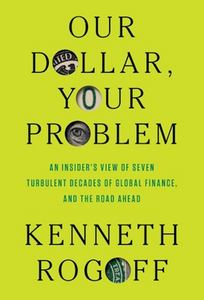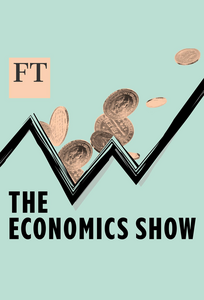Article
Article
In recent decades, the US has recorded substantial trade deficits. A significant driver of these deficits is the strong global demand for US government bonds. This demand drives up the value of the dollar and pushes down US interest rates, making imports cheaper and thus contributing to the trade deficit.
The worldwide demand for US assets is commonly referred to as the “exorbitant privilege”, as it enables the US to finance itself under favourable conditions in relation to the rest of the world.
The goal of Trump’s policy is to reduce the trade deficit, mainly through tariffs on imported goods. The idea is to make foreign goods more expensive, thus incentivising the relocation of production to the US. The introduction of US tariffs—presumably because of their erratic implementation and associated high uncertainty—also led to investors fleeing from the dollar. The dollar depreciated, and US interest rates rose. This indirect effect—the erosion of the exorbitant privilege—may also contribute to the reduction of the US trade deficit.
But are there sound economic reasons why reducing the trade deficit would be desirable for the US at all? In a recent study, we show that the exorbitant privilege and the resulting trade deficits can indeed lead to welfare losses for the US. We argue that low interest rates primarily serve to boost private consumption. In the non-tradable goods sector (for example, most services or construction), the increased demand raises prices and thus wages. The higher wages, in turn, reduce the competitiveness of firms in the tradable sector (for example, manufacturing), causing these firms to shrink. However, investment and productivity growth are mainly concentrated in the tradable sector. The contraction of firms in this sector therefore leads to lower investment, and growth stagnates. This negative growth impulse can be strong enough to turn the exorbitant privilege into a “burden”, so that trade deficits genuinely reflect lower welfare.
But does this mean that tariffs—and the associated reduction in trade deficits and flight from the dollar—would somehow improve economic welfare? The answer is no. Our economic model shows that while tariffs may reduce the trade deficit, they further lower productivity growth. This is because firms in the tradable sector must spread their investments across a wider range of products when domestic production replaces imports. This reduces the efficiency of investment and thus productivity growth, further lowering US prosperity. Successfully reducing the trade deficit and triggering a flight from the dollar by means of tariffs would be a Pyrrhic victory, as it fails to revive the US economy as hoped.
A more targeted and effective policy than the introduction of tariffs would be to redirect cheap capital inflows into the US towards the right sectors. We discuss, for example, the creation of investment incentives for firms in the tradable sector—a natural approach, since the welfare losses from trade deficits stem from insufficient investment in this sector. Such a policy would channel cheap capital inflows away from consumption and into productive investment. The trade deficits would not disappear, but they would at least partly reflect imports of investment goods and robust growth.
Furthermore, these investment incentives are most affordable when global demand for dollars remains stable and US interest rates (especially on public debt) stay low. In this light, an erratic tariff policy, which undermines demand for dollars, raises interest rates, and makes financing investment incentives more difficult, is doubly harmful for the US.
And the Rest of the World? It also benefits from low US tariffs and robust US productivity growth, the latter for instance through increased knowledge transfers, which in turn raise productivity growth globally.
Image: Adobe Stock / leungchopan

Book
Harvard Professor Kenneth Rogoff demonstrates that the dollar’s decline began before Trump.

Podcast
Unfortunately, not me but Martin Wolf, the Chief Economics Commentator at the Financial Times, talks to Kenneth Rogoff about Donald Trump's trade policy, the future of the dollar, and what this means for other currencies.